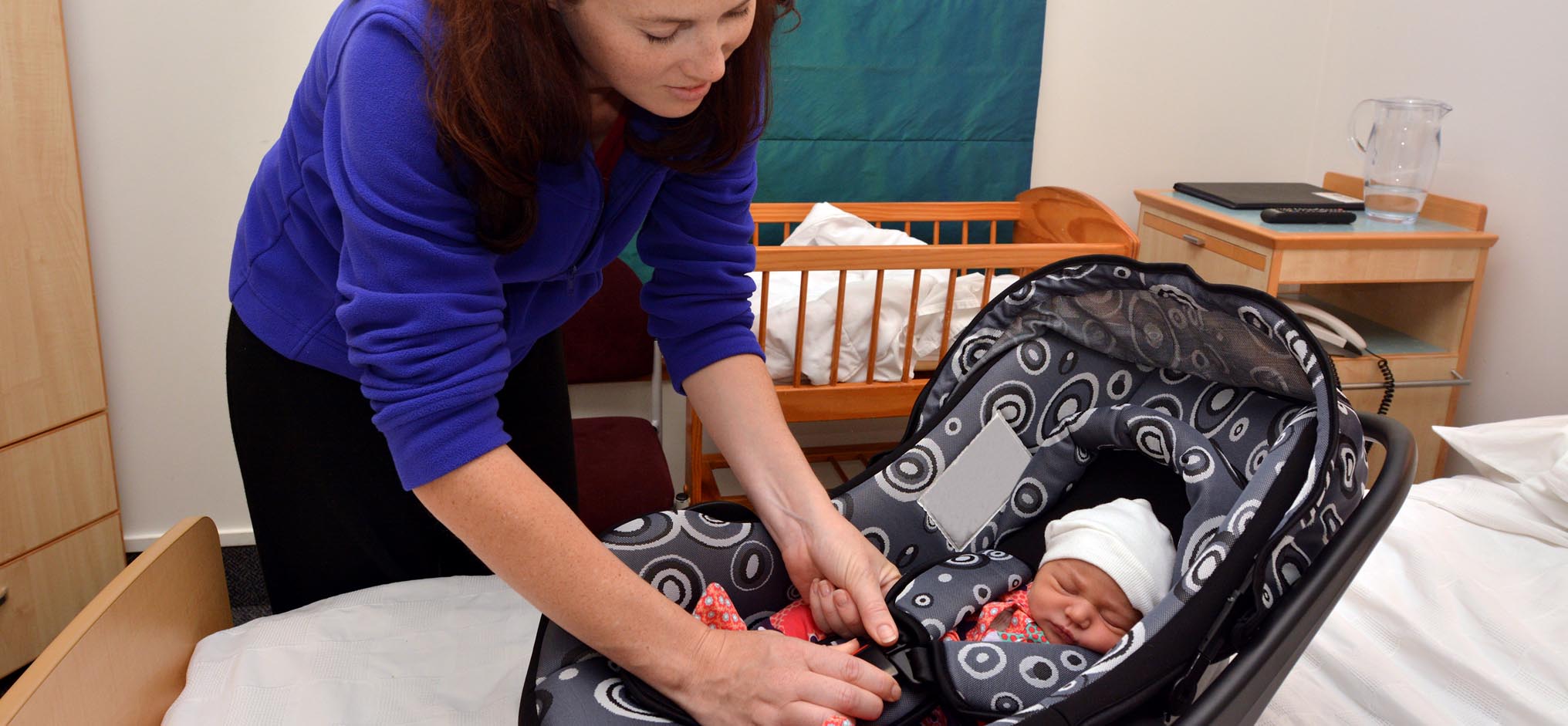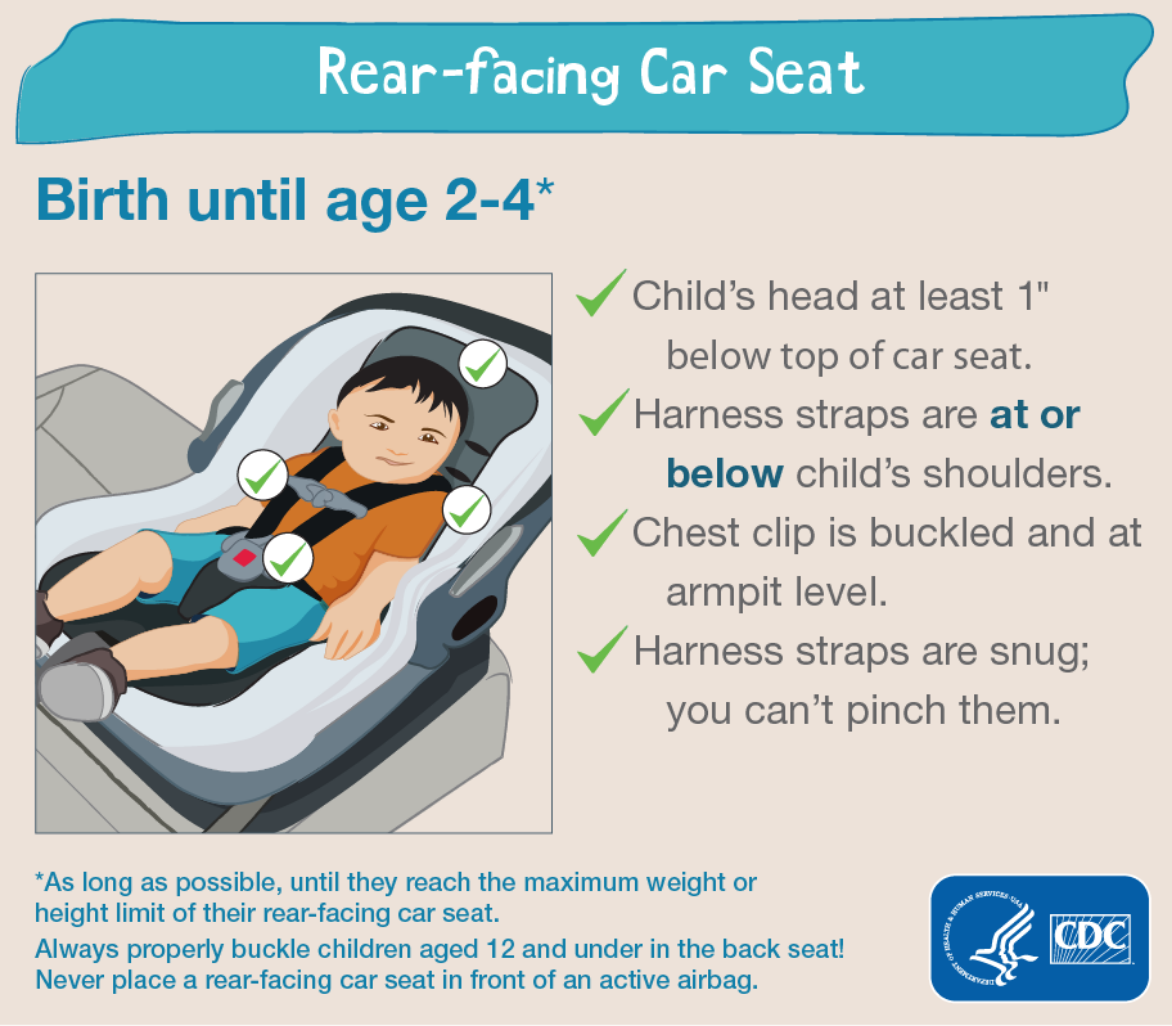
Transportation home
Make sure to coordinate transportation home for you and your baby before you leave the hospital. Remember to install an infant car seat in the vehicle you’ll be taking. Car seats are required by law, and they can save your baby’s life.
Follow your car seat manufacturer’s instructions and your vehicle owner’s manual. Hospital staff and volunteers generally are not certified to install car seats, so they cannot assist you with this important task.

Remember — Your baby must always ride in a rear-facing car seat, starting with the first ride home from the hospital. It’s the law!
Using the car seat
From birth until your baby is 12 months old or reaches the maximum height and weight for his or her seat:
- Set up the car seat to be rear facing. Keep your child rear-facing as long as possible. The American Academy of Pediatrics recommends a rear-facing car seat until 2 years of age or until your child reaches the highest rear-facing height or weight allowed by the car seat manufacturer.
- Secure the car seat in the back seat. Never install a car seat in the front seat.
- Recline the car seat at a 45-degree angle. If your baby’s head falls forward, the car seat may not be reclined enough.
- Thread the car seat harness straps through the seat slots at or below your baby’s shoulders.
- Set the chest clip at armpit level.
- Tighten the harness straps so there is no slack in them. If you can pinch the material together between your thumb and forefinger, it’s too loose.
- Make sure the car seat does not move more than one inch in any direction.
- To better fill empty spaces and provide support, roll up a couple of small blankets and tuck them in on each side of your baby’s shoulders and head. If your baby slumps down, put a small, rolled blanket or a burp cloth between his or her legs behind the crotch strap. (Do not put thick padding underneath or behind your baby.)
- Do not dress your baby in any clothing or coats thicker than a sweatshirt while he or she is in the car seat. During a crash, bulky material will compress, making the harness straps too loose on your child and preventing the straps from helping the child come to a gentle stop during a crash.

Graphic courtesy of Centers for Disease Control and Prevention.
Visit CDC.org for more information about correctly installing your baby’s car seat.

Resources
The National Highway Traffic
Safety Administration website
(nhtsa.gov)
This site includes safety tips, a buying guide, and videos on correct installation for your baby’s car seat. Certified technicians are available to check your car seat for free.
Or call 1-866-SEAT-CHECK (1-866-732-8243) to find an inspection station, or to make an appointment to have your car seat inspected.
How to reach us
Need to make an appointment with your care provider? Feeling something unusual or like you’re going into labor? Want advice about breastfeeding? We’re here for your call.

